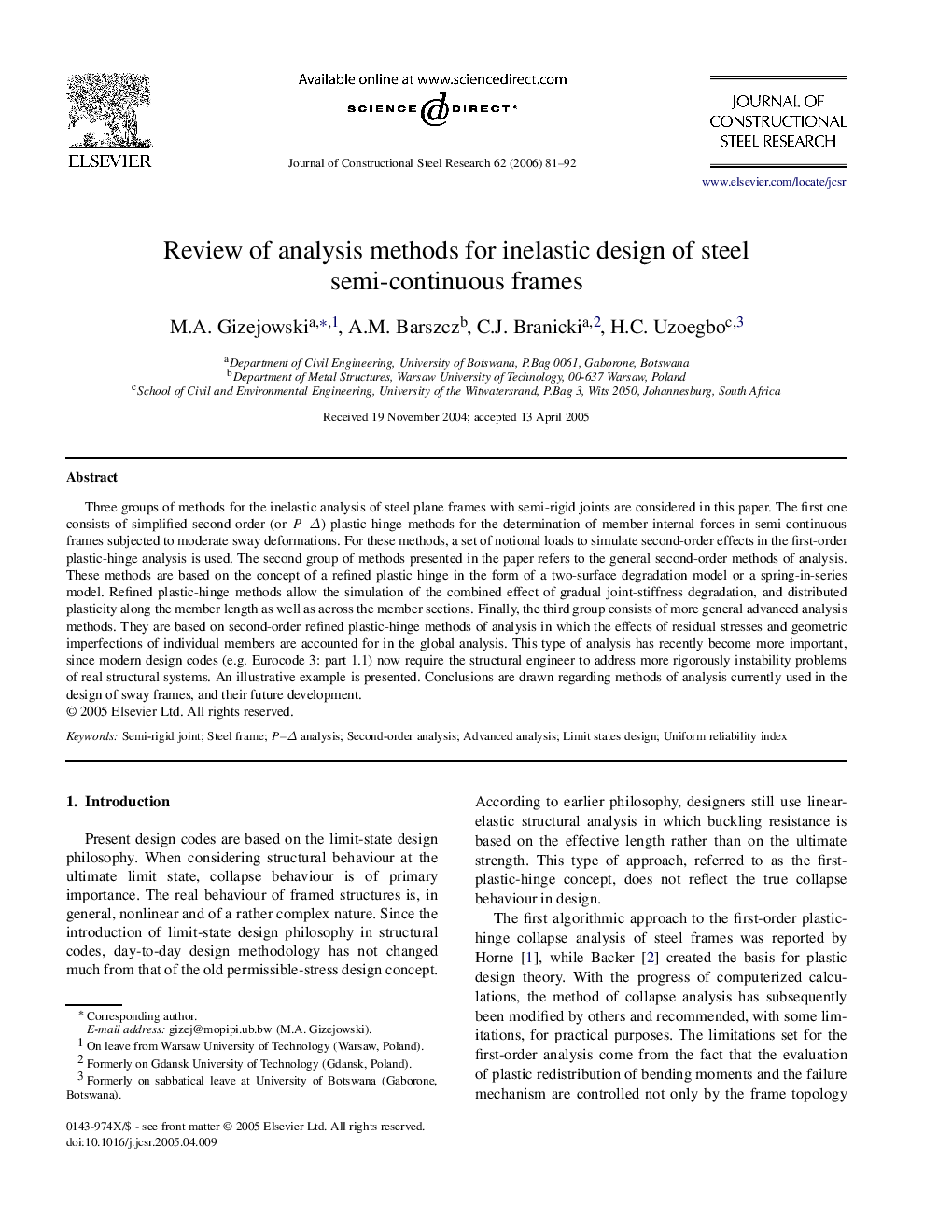| Article ID | Journal | Published Year | Pages | File Type |
|---|---|---|---|---|
| 286204 | Journal of Constructional Steel Research | 2006 | 12 Pages |
Three groups of methods for the inelastic analysis of steel plane frames with semi-rigid joints are considered in this paper. The first one consists of simplified second-order (or P–ΔP–Δ) plastic-hinge methods for the determination of member internal forces in semi-continuous frames subjected to moderate sway deformations. For these methods, a set of notional loads to simulate second-order effects in the first-order plastic-hinge analysis is used. The second group of methods presented in the paper refers to the general second-order methods of analysis. These methods are based on the concept of a refined plastic hinge in the form of a two-surface degradation model or a spring-in-series model. Refined plastic-hinge methods allow the simulation of the combined effect of gradual joint-stiffness degradation, and distributed plasticity along the member length as well as across the member sections. Finally, the third group consists of more general advanced analysis methods. They are based on second-order refined plastic-hinge methods of analysis in which the effects of residual stresses and geometric imperfections of individual members are accounted for in the global analysis. This type of analysis has recently become more important, since modern design codes (e.g. Eurocode 3: part 1.1) now require the structural engineer to address more rigorously instability problems of real structural systems. An illustrative example is presented. Conclusions are drawn regarding methods of analysis currently used in the design of sway frames, and their future development.
